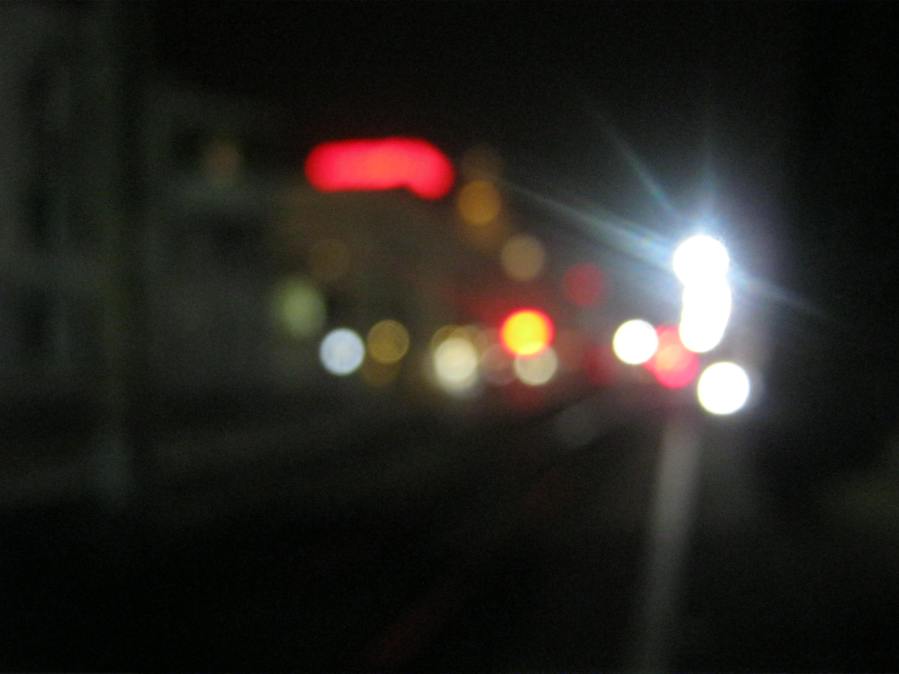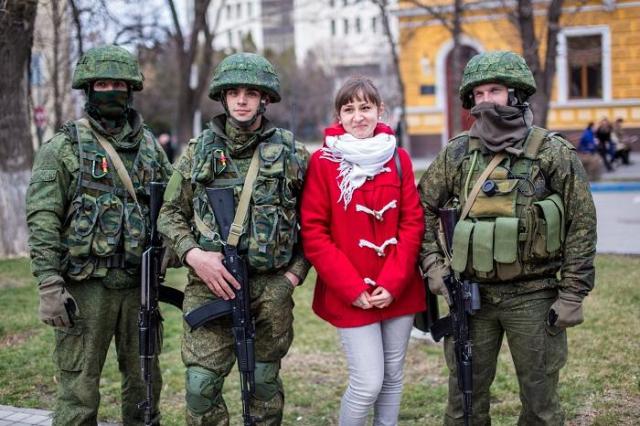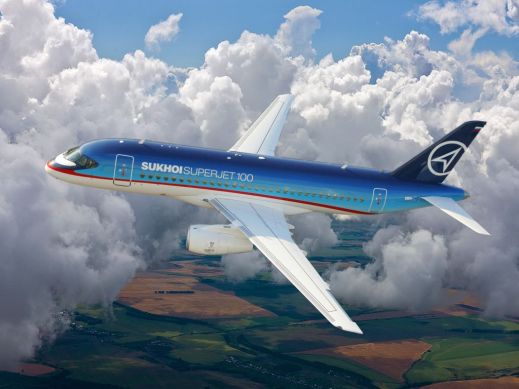We were in Yalta, in the famous palace where Churchil, Rosenvelt and Stalin held a famous conference. I talked to a woman selling souvenirs. I asked her, do you have a lot of foreign visitors here. She answered ‘Yes’, I was surprised. Then I realized my mistake, I asked again, ‘Do you have a lot of western tourists here?’ She told me “We used to have, but now almost nothing at all.” I then realised that we might very well be the only westerners in Crimea. How was this possible? – A look into the sanctions targeting the people of Crimea.
Wine from France!
“What kind of wine would you like?”, the waiter asked my friend that ordered wine. And with a smile to accompany her pride, “we have French wines!” To Drink French wine in a restaurant in does not seem very special, but the idea to have French wine in Crimea was indeed really something to be proud of.
After Russian soldiers were actively deployed on Russia and Russia accepted the request of the people living in Crimea to join Russia, western countries were and still are, outraged. Though the word ‘reunification’ is widely used in Russia to indicate that Crimea became part of Russia, the usual word used in the west is ‘annexation.’ Western countries generally interprete the events, not as local deciding in a referendum to join Russia, but by Russia taking over Crimea with Force. From the western countries their perspective something had to be done.
Both the US and the EU responded with a set of economic sanctions. Russia was, for example no longer allowed to borrow money from the EU and US capital market and were certain goods not allowed to be exported to Russia, like equipment needed for oil and gas drills.
In the past, Crimea used to be a place which was welcomed with the presence of Cruise ships. People from all over the world would come to take a make a stop in for example Yalta to see the famous palace that house the Yalta-conference in World War II, not these ships had all but stopped to visit Crimea resulting in a dramatic cut in tourism.
A video popular television clip from 2014 following the events in Crimea. The video gives a sense of how Putin and the counter-sanctions installed by the Russian Federation are perceived in the west.
Bank and Telecommunication services
I knew that it was impossible, but I wanted to try anyway, to see what would happen. We already took our precautions so it did not present any real problem to our trip, but still, I wanted to find out: what would happen if I would use my Dutch bankcard in Crimea? In the short line which happened to be in front of the ATM I noticed that the Russian card were working alright. What about western ones? I put in my card, was even able to type in my security code alright, got in the menu. To my surprise I found out I could even select how much money I wanted to collect. Perfect! More souvenirs! But alas, as soon as the machine was about to hand out the cash, it stated that the action I was about to perform, was not allowed by my bank.

“Excuse us, the operation via your card if forbidden by your bank.
Please contact the contact center of your bank.
Please take your card.”
This is the situation any tourist is confronted with trying to collect money from a western bank, it is not allowed, impossible. It is the result of sanctions imposed by European and US governments on the Crimea. Collecting money anywhere else in Russia is fine, but impossible in Crimea. In fact, all financial services are blocked there. Making payments is very hard if not impossible. Without big sums of cash or a Russian account, it is not possible to stay in Crimea for long.
The same holds true for telecommunications. The two friends I was traveling with tried to call me, just to check whether we could reach each other alright. But we were surprised to find out their card did not work at all, they were blocked. Just as for the use of bank services, the usage of telecommunications is not allowed by European law. Russian cards work alright, it is just a different matter for the European ones.
Also the internet has been turned into a battlespace as apple products would not update in Crimea. At home they worked alright, in Crimea you might better want to trade your mac for windows if you want to travel the internet secure.
Embassy
Running into trouble as a Dutch citizen in Crimea might result in an interesting diplomatic situation. This is already visible from the official travel advice of the Dutch government of anyone traveling to Russia. Crimea is not even on the map of Russia. A persistent traveller might look into the travel advice given for Ukraine. It says there that any traveller going Crimea can only receive “limited consolatory assistance” of the Dutch embassy.

A map found on the wesbite of the Dutch government. Russia is indeed portait without Crimea.
Because the Dutch government does not recognize Crimea as part of Russia, any traveller running into trouble in Crimea might prove to be left alone or might provoke a diplomatic nightmare for European countries. In the latter case, European Countries might need to ask Russia for help in the region and would, to a certain degree, recognize Crimea as being part of Russia.
Conclusions
Any traveling to Crimea is effectively impossible due to western sanction. The blocking of sim-cards, the impossibility to use bank deposites, makes it impossible to travel to Crimea without serious preparations. . This has drastically reduced the amount of tourists, especially from western countries traveling to Crimea. The impossibility to import or export goods to and from Crimea also put additional stress on the local economy and hence population.
The economic warfare western countries wage against the Russian government is initiated to punish the Russian government for, what is perceived in the west, as the ‘illegal annexation of Crimea by Russia, from Ukraine.’ So far, there is little sight that Crimea will be part of Ukraine again and the economic warfare waged by the west seems to be for nothing. But just like real warfare, the economic warfare does not commence without making civilian casualties, especially in Crimea.
Sources:
https://www.rijksoverheid.nl/onderwerpen/reisadviezen/inhoud/oekraine
https://www.rijksoverheid.nl/onderwerpen/reisadviezen/inhoud/rusland











